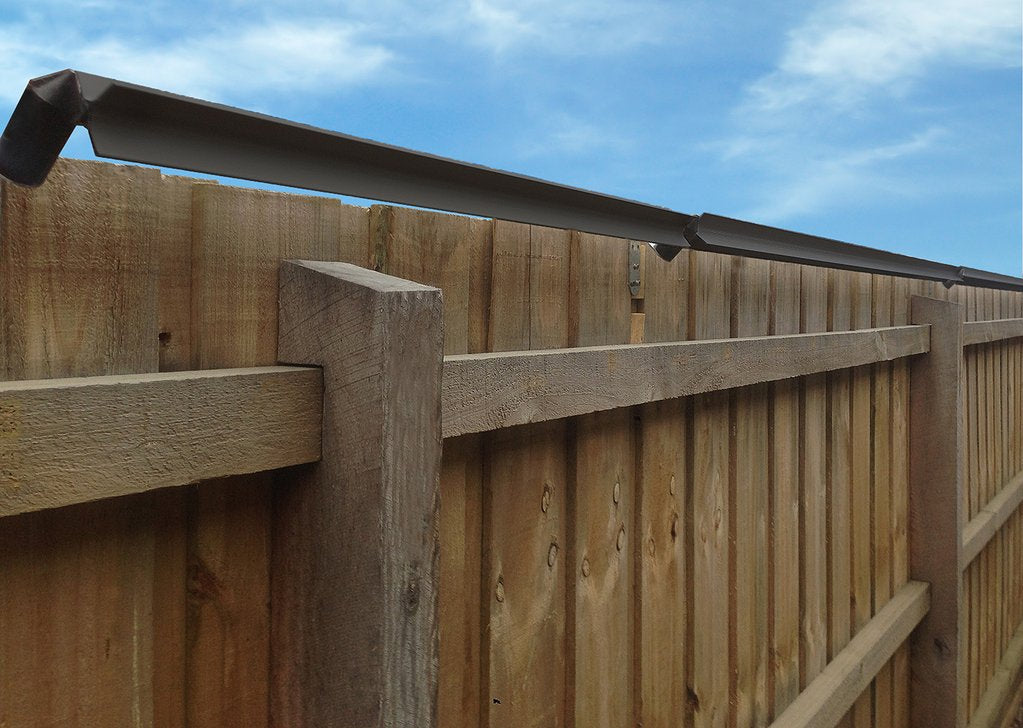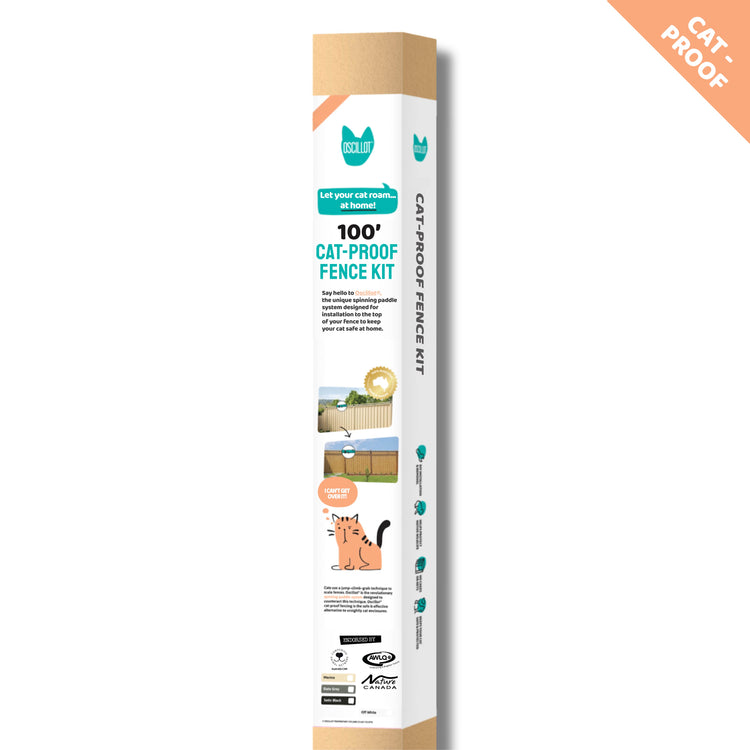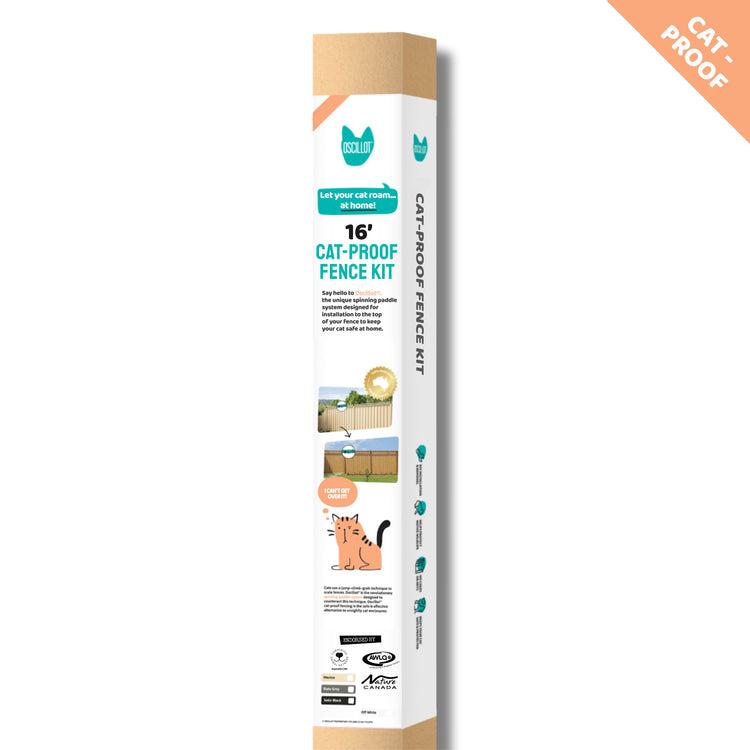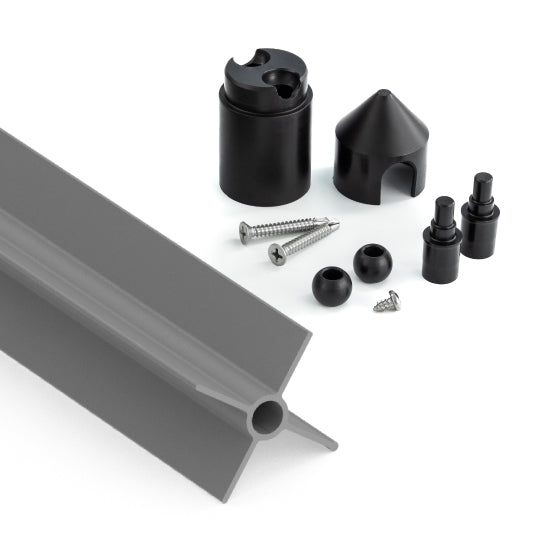How to Adjust Fence for Kittens or Small Cats: A European Guide

Key Takeaways About Kitten and Small Cat Containment in Europe
- European regulations emphasize humane pet containment with specific safety standards across member states
- Kittens require specialized containment considerations due to their small size and ability to squeeze through tight spaces
- Oscillot® cat-proof fence systems are widely available throughout Europe with EU-compliant components
- Professional installation services are available, though DIY options remain popular and cost-effective
- System sizes range from compact 1.2-meter kits (€40.00) to extensive 31-meter solutions (€680.00)
- Minimum recommended fence height of 1.83 meters ensures effectiveness for cats of all sizes and ages
- Gap prevention is crucial for kitten containment, with openings no larger than 5cm recommended
- Regular maintenance is essential, particularly in regions with extreme seasonal weather variations
- Cat containment systems help protect local wildlife populations while keeping felines safe from traffic
- Most systems can be adapted to various European property types, including terraced housing and historic buildings
Introduction to Cat Containment in the European Union
Across the European Union, cat owners face the challenge of keeping their feline companions safe while allowing them to enjoy the outdoors. This is especially important when it comes to kittens and small cats, who are more vulnerable to predators, traffic, and other hazards. The EU has increasingly recognized the importance of responsible pet ownership, with various member states implementing recommendations for appropriate containment measures that protect both cats and local wildlife. Countries such as Germany, France, and the Netherlands have developed specific guidelines that promote humane containment solutions while respecting animal welfare standards.
In this guide, we'll explore how European cat owners can adjust their fencing specifically for kittens and small cats. Cat-proof fence kits have become increasingly popular throughout Europe, offering a humane solution that keeps cats safely contained while still allowing them to enjoy the fresh air and stimulation of the outdoors. Whether you have a new kitten or a small adult cat, proper containment is essential for their safety and your peace of mind. Recent studies by European veterinary associations indicate that contained cats live significantly longer lives—up to 3-5 years longer on average—than those allowed to roam freely, making proper containment not just a matter of convenience but a critical health consideration.
Understanding the Special Needs of Kittens and Small Cats
Kittens and small cats have unique needs when it comes to containment. While they may not be able to jump as high as fully grown cats, they often have other abilities that make them escape artists in their own right. European veterinarians note that kittens under six months of age typically can't jump higher than 1.2 meters, but their climbing abilities and agility often make up for this. Their skeleton is still developing, making them more flexible and able to squeeze through tight spaces that would stop bigger cats.
Kittens are naturally curious and can squeeze through surprisingly small gaps. Their lightweight bodies allow them to climb surfaces that might not support heavier adult cats. Small adult cats, while more cautious than kittens, may still find ways to escape through openings in fencing that larger cats cannot navigate. Research conducted by the European Feline Behavior Association suggests that kittens are particularly motivated by exploration and play, making them more likely to test boundaries and seek out potential escape routes compared to their adult counterparts.
European cat owners need to consider these factors when adjusting their fences for smaller felines. The standard recommendation across the EU is for fence heights of at least 1.83 meters (6 feet), but with kittens and small cats, it's equally important to address small gaps and potential climbing routes. In countries like Sweden and Finland, where extreme weather conditions can create additional challenges, experts recommend supplementary measures such as snow barriers during winter months to prevent kittens from using snowdrifts as launching points over containment systems.
Choosing the Right Containment System for European Properties
The European market offers several options for cat containment, with solutions designed to fit different property types and cat behaviors. When picking a system, think about factors specific to European living situations, such as terraced housing in the UK and Netherlands, apartment balconies in cities across the continent, and historic stone walls common in Mediterranean countries. Each property type has its own challenges that need specific containment approaches.
Oscillot® cat-proof fence systems have become a popular choice throughout the EU, offering sizes ranging from small 1.2 meter kits (€40.00) for compact gardens to comprehensive 31 meter solutions (€680.00) for larger properties. These systems use rotating paddles that prevent cats from getting a secure grip when attempting to climb over fences. The paddles are manufactured to meet EU safety standards and are constructed from UV-resistant materials suitable for the varied European climate conditions, from the Mediterranean sun to Scandinavian winters.
For kittens and small cats, it's important to ensure that the containment system addresses their specific escape routes. This may mean adding additional components like mesh barriers to prevent squeezing through gaps or tree guards to prevent climbing nearby trees to bypass the fence. European garden designs often incorporate trees and shrubs close to property boundaries, making tree guards an essential component in many installations. Additionally, many European homeowners opt for integrated systems that combine multiple containment methods to address the varied abilities of kittens as they grow into adult cats.
Adjusting Fence Height for Kittens and Small Cats
While the standard recommendation for cat fence height in Europe is 1.83 meters, there are special considerations when containing kittens and small cats. European feline behaviorists have observed that even though kittens have limited jumping abilities initially, their rapid development means any containment solution must account for their future capabilities. A study by the University of Utrecht's Veterinary Department found that by eight months of age, most domestic cats have developed nearly their full jumping potential, highlighting the importance of forward-thinking containment planning.
While kittens cannot jump as high as adult cats, they will grow quickly. Rather than adjusting a fence for a kitten's current abilities, it's more practical to install a containment system that will work throughout their life. This prevents the need for frequent adjustments as they grow and develop their jumping and climbing skills. European cat welfare organizations recommend planning for a cat's adult capabilities from the start, as the average European domestic cat can begin attempting significant jumps as young as four to five months of age.
For small adult cats, the standard 1.83-meter height recommendation still applies, as even smaller cats can be surprisingly good jumpers when motivated. The installation guide for Oscillot® systems provides detailed instructions for ensuring proper height installation regardless of cat size. For European breeds with particularly strong jumping abilities, such as the Norwegian Forest Cat or European Shorthair, some experts recommend adding an additional 20cm to the standard height recommendation, especially in areas where external motivators like birds or squirrels might entice jumping attempts.
If your existing fence is lower than the recommended height, consider adding height extensions before installing the containment system. This is particularly important in European urban areas where traffic poses a significant risk to escaped cats. In cities like Paris, Berlin, or London, where traffic density is extremely high, local animal welfare organizations strongly advocate for comprehensive containment systems that account for both current and future jumping abilities of growing kittens.
Addressing Gaps and Small Spaces in Fencing
One of the biggest challenges when containing kittens and small cats is their ability to squeeze through small openings in fencing. European housing styles present unique challenges in this regard, particularly in older properties where irregular stonework, decorative ironwork, or historic architectural features may create numerous potential escape points. According to the European Association for Small Animal Veterinarians, kittens can squeeze through openings as small as 3-4 centimeters in diameter—roughly the width of their skull.
When adapting fencing for kittens and small cats, conduct a thorough inspection of your entire fence perimeter. Look for gaps larger than 5 cm (2 inches), which is generally small enough to prevent most kittens from squeezing through. Pay particular attention to: Areas where the fence meets the ground, which may have gaps due to uneven terrain. This is especially common in European properties with older stone walls or irregular boundaries. Consider adding mesh barriers or burying the bottom of mesh fencing to prevent escape.
Joints between fence sections, which often have wider gaps than the rest of the fence. These can be reinforced with additional brackets (€15.00) to ensure a secure fit. In European installations, these joints are particularly problematic in traditional wooden fencing common in countries like Germany and Austria, where seasonal expansion and contraction can create variable-sized gaps throughout the year.
Gates and access points, which frequently have larger gaps than the main fence. Adding brush strips or flexible barriers can help seal these openings without affecting functionality. European garden designs often incorporate multiple access points, including service gates and decorative entrances, each requiring individual attention during the containment system installation process. In Mediterranean properties, where outdoor living spaces often feature multiple transition areas between house and garden, these access points require particular attention to maintain both aesthetic appeal and effective containment.
Specialized Components for Kitten and Small Cat Containment
Several specialized components can enhance the effectiveness of cat containment systems for kittens and small cats. European containment specialists have developed solutions specifically designed to address the unique challenges presented by the continent's diverse architectural styles and property types. These components are engineered to meet EU safety standards while providing effective containment for even the smallest and most agile feline family members.
Dual knuckle post kits (€15.99) provide flexible mounting options that can be adjusted to accommodate the specific needs of smaller cats. These are particularly useful for European properties with irregular fence lines or special features that require customization. These components are especially valuable for adapting containment systems to the wrought iron fencing common in countries like France and Italy, allowing for secure attachment while preserving the aesthetic character of traditional European garden boundaries.
Brackets (€3.00) ensure secure attachment of containment components to existing fences. For kittens and small cats, it's important to place brackets closer together than might be necessary for larger cats, as this prevents the creation of gaps that small bodies could squeeze through. European containment experts typically recommend spacing brackets no more than 1 meter apart when installing systems specifically for kitten containment, compared to the standard 1.5-meter spacing for adult cats.
Cat tree guards (€25.99) are essential if you have trees near your fence line, as kittens and small cats are excellent climbers and may use trees as escape routes. These guards prevent cats from climbing trees within jumping distance of your fence. In European gardens, where mature trees are often preserved as central landscape features, tree guards play a crucial role in creating a comprehensive containment solution. The European Arboricultural Council has confirmed that properly installed tree guards cause no harm to tree health while effectively preventing cats from using them as escape routes.
Installation Tips for European Properties
Installing cat containment systems on European properties requires consideration of specific regional factors and property types. From the compact urban gardens of major cities to expansive rural estates, European properties present diverse installation challenges that require thoughtful planning and execution. Adaptation to local building materials, climate conditions, and architectural styles is essential for creating effective containment solutions that complement the character of European homes.
For terraced housing common in countries like the UK, Belgium, and the Netherlands, coordination with neighbors may be necessary when installing systems on shared walls. These properties often have small rear gardens with party walls that may not meet the minimum 1.83-meter height requirement and might need extension before adding containment systems. Local housing regulations in many European cities provide specific guidelines for modifications to shared structures, making it important to consult municipal building codes before installation. In some cases, written permission from adjoining property owners may be required, particularly in densely populated urban areas.
Mediterranean villas often feature stone walls that require appropriate mounting hardware. The installation guide provides specific instructions for different surface types, including stone, brick, and concrete walls common in southern European countries. For the porous limestone common in regions like Provence and Tuscany, specialized anchoring systems are recommended to ensure secure attachment without damaging historic stonework. European containment specialists often recommend consulting with local stonemasons when installing systems on traditional Mediterranean walls to ensure compatibility with regional building techniques.
For historic properties, which are common throughout Europe, there may be restrictions on modifications visible from public areas. In these cases, installing containment systems on the interior side of fencing can provide effective protection while complying with preservation requirements. Countries like France, Italy, and the UK have particularly strict regulations regarding alterations to listed buildings and properties in conservation areas. In such cases, reversible installation methods that don't permanently alter historic structures are strongly recommended and may be legally required. Local heritage preservation officers can provide guidance on appropriate installation techniques for properties with historical significance.
Testing and Monitoring Your Fence for Kitten Safety
After installing or adjusting your fence for kitten or small cat containment, proper testing and monitoring are essential to ensure effectiveness. European feline behavior specialists emphasize the importance of methodical observation during the initial containment period, as kittens will systematically test boundaries and explore potential escape routes. This testing phase is critical for identifying and addressing any weaknesses in your containment system before they result in escapes.
Initially, supervise your kitten or small cat closely when they're in the contained area. Watch for any attempts to escape and note potential weak points in your containment system. This supervised period should last at least one week, as recommended by European animal welfare organizations. European veterinary behaviorists suggest conducting these supervised sessions at different times of day, as cats may exhibit different exploratory behaviors depending on lighting conditions, time of day, and external stimuli present in the environment.
Conduct regular inspections of your fence and containment components, especially after extreme weather events which are common in various European regions. Check for damage, loose components, or shifts in the fence that might create new escape routes. In northern European countries, where freeze-thaw cycles can affect ground conditions and fence stability, more frequent winter inspections are recommended. Similarly, in southern European regions, where intense summer heat can affect material integrity, seasonal checks of plastic components are advised to identify UV damage or heat-related deterioration.
Consider placing motion-activated cameras in key areas if you can't directly supervise your cat at all times. This can help identify escape attempts or potential weaknesses in your containment system that need addressing. Modern European smart home systems often include garden monitoring capabilities that can be integrated with pet containment surveillance. These technologies are particularly valuable for working pet owners who cannot provide constant supervision but wish to ensure their containment systems remain effective. The European Pet Technology Association reports that integrated monitoring systems have significantly reduced escape incidents by allowing prompt identification and resolution of containment issues.
Maintenance for Long-Term Effectiveness
Proper maintenance ensures that your cat containment system remains effective as your kitten grows or as seasons change across Europe's diverse climate zones. The continent's varied weather conditions—from Scandinavian winters to Mediterranean summers—create unique maintenance challenges that require regionally appropriate approaches. European containment specialists emphasize the importance of preventative maintenance schedules tailored to local climate conditions to maximize system longevity and effectiveness.
Seasonal maintenance is particularly important in European countries with distinct weather patterns. After winter, check for damage from snow loads or shifted fence posts due to freeze-thaw cycles, especially in northern and central European regions. In Mediterranean areas, check for UV damage to components during hot summer months. European climate researchers have noted that the increasing frequency of extreme weather events across the continent—from intense summer heatwaves to winter storms—makes regular seasonal inspections more critical than ever for maintaining effective containment systems.
As your kitten grows, reassess the containment system to ensure it remains effective for their increasing size and abilities. What works for a small kitten may need adjustment as they develop into a more capable adult cat. European veterinary growth charts indicate that most domestic cats reach approximately 75% of their adult size by six months of age, with jumping and climbing abilities developing rapidly during this period. Scheduling system reassessments to coincide with these developmental milestones can help ensure continuous containment effectiveness throughout your cat's growth stages.
Keep spare parts on hand for quick repairs if needed. This is especially important in remote European areas where replacement components might not be readily available. In countries like Norway, Sweden, and parts of Eastern Europe, where winter weather conditions can make travel difficult and delivery times extended, maintaining an inventory of essential replacement parts is particularly important. European containment specialists typically recommend keeping at least one replacement for each critical component type, with additional spares for components most vulnerable to weather damage in your specific region.
Conclusion: Safe Outdoor Experiences for European Cats
Providing safe outdoor experiences for kittens and small cats while respecting European wildlife conservation efforts and neighborhood considerations is increasingly important for responsible cat owners across the EU. The European approach to cat containment reflects the continent's strong emphasis on both animal welfare and environmental protection, seeking balance between cats' natural behaviors and the protection of native wildlife. As European biodiversity conservation efforts intensify, responsible cat containment has become an important component of sustainable pet ownership practices across the continent.
By properly adjusting fences for kittens and small cats, European pet owners can provide their feline companions with the enrichment of outdoor access while ensuring their safety. Cat containment systems like Oscillot® offer effective solutions that can be customized to address the specific needs of smaller cats and the unique characteristics of European properties. Studies by European veterinary associations consistently show that cats with access to secure outdoor spaces exhibit fewer behavioral problems and enjoy better physical health compared to those kept exclusively indoors, highlighting the welfare benefits of effective containment solutions.
With options ranging from small 1.2 meter kits (€40.00) for compact urban gardens to extensive 31 meter solutions (€680.00) for larger properties, there's a containment solution suitable for every European cat owner's needs and budget. European consumer protection regulations ensure that these products meet stringent safety and durability standards, providing reliable performance across the continent's diverse environmental conditions. As awareness of responsible pet ownership continues to grow throughout Europe, containment systems have evolved to offer increasingly sophisticated and effective solutions for cats of all sizes.
Remember that the key to effective containment is addressing all potential escape routes—not just fence height but also gaps, climbing opportunities, and other creative paths that ingenious kittens and small cats might discover. With proper installation and regular maintenance, your containment system will provide years of safe outdoor enjoyment for your feline companion. European cat welfare organizations emphasize that effective containment represents a significant contribution to both individual cat welfare and broader environmental protection efforts, making it an essential consideration for responsible European cat owners.
Need Help Choosing the Right System?
If you're unsure which cat containment system is right for your European property, contact our team for personalized advice based on your specific situation. We understand the unique challenges of European properties and can help you select the appropriate solution for your kitten or small cat.





















Leave a comment